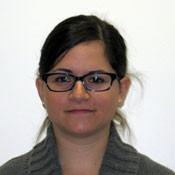Program Information
In Vivo Proton Therapy Range Verification Using Time-Resolved Diode Dosimetry: Validation Through Numerical Modeling
A Toltz1*, M Hoesl2 , J Schuemann2 , J Seuntjens1 , H Lu2 , H Paganetti2 , (1) McGill University, Montreal, QC, (2) Massachusetts General Hospital, Boston, MA
Presentations
SU-H1-GePD-T-4 (Sunday, July 30, 2017) 3:00 PM - 3:30 PM Room: Therapy ePoster Lounge
Purpose: Previously, a silicon diode array system has been developed and experimentally tested in phantom for passively scattered proton beam range verification by correlating response of the detector signal in time to the water equivalent path length (WEPL). Simulations and in-phantom measurements were compared to validate the calibration procedure and test the accuracy in-patient of the in vivo, adaptive proton therapy range verification time-resolved diode dosimetry technique.
Methods: The implementation of this in vivo verification method requires a set of calibration measurements to establish the beam-specific diode response to WEPL fit for the selected ‘scout’ beam in a plastic water phantom. The diode response to WEPL relationship for a given ‘scout’ beam in a patient may be determined within a simulation environment by correlating the root mean square width of the dose rate per range modulator wheel cycle to scoring depth. Measurements for three ‘scout’ beams, representative of three clinical cases, were compared against simulated detector response using the Monte Carlo Tool for Particle Simulation (TOPAS).
Results: Measured detector response in water equivalent plastic was successfully validated against simulation for spread out Bragg peaks of range 10 cm, 15 cm, and 21 cm (168 MeV, 177 MeV, and 210 MeV) in plastic water and on a patient CT. WEPL determination was shown to be accurate to within 2 mm for simulated plastic water and to within 5 mm for the patient CT.
Conclusion: Feasibility has been shown for performing calibration of detector response for a given ‘scout’ beam through Monte Carlo simulation in-patient for the time resolved diode dosimetry technique.
Contact Email:
